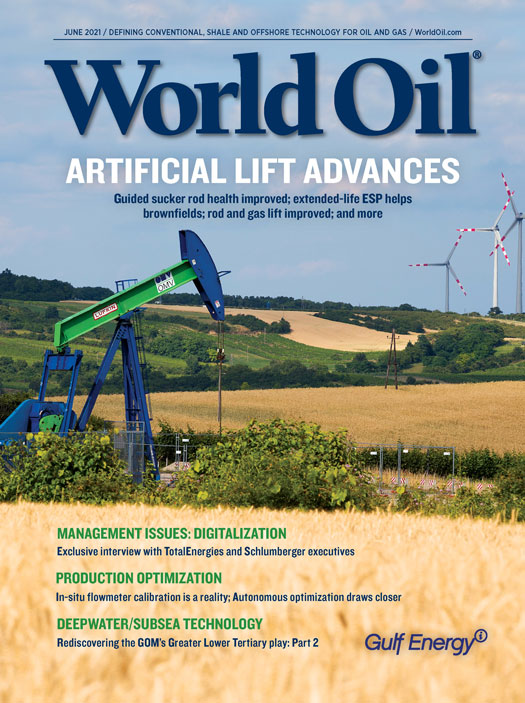Issue: June 2021
Features
In a fast-paced, cost-conscious oil and gas industry, OEM groups seek standardization and efficiencies through commodity manufactured valves. These products provide the availability and utility demanded by end users to adequately support operational needs. One variable difficult to fit into this “commodity mindset” is the choke valve.
A combination of laboratory and wellsite analysis can be used to address in-situ meter performance to reduce maintenance frequency. This conditioned-based monitoring can reduce the overall annual cost of operating multiphase flowmeters in deeper and more remote fields.
Two senior executives with TotalEnergies and Schlumberger give their thoughts and analysis of what the industry’s digital transformation effort has accomplished and where it is headed in the future.
Historically, operators have employed piecemeal strategies to optimize components of the production value chain. However, achieving autonomous operations will require a holistic approach, integrating traditionally disparate data sources to create a single digital twin that can be delivered with relatively small up-front investment.
New analysis tools and improved technology enable operators to tailor an initial drawdown strategy for every well in real time, leading to improvements in short- and long-term production.
Like the rest of us, Russia’s oil and gas industry has been hammered by Covid and the price collapse. But the Bear’s pain, and recovery, is compounded by a pack of uniquely ursine issues.
The titular “cash engine” that is the Bakken-Three Forks shale has been running on fumes. But most of the operators left standing after a wave of consolidations are gearing up for what promises to see the Williston basin play regain some of its grit, as the year unfolds.
The Subsurface Trend Analysis (STA) method is a data-driven approach, in which deductive geologic methods are integrated with spatiotemporal statistical autocorrelative methods. NETL has developed STA to better understand subsurface systems and predict their properties.
Part 2: In April, the first half of this two-part feature documented industry’s failure to profitably exploit the massive Wilcox Lower Tertiary trend in the ultra-deepwater Gulf of Mexico. This second article evaluates how alternative technologies and strategies can make those failing assets profitable while reducing human and environmental risk.
Special Focus
Many factors must be considered when discussing how to optimize production, but industry evolution and advances in technology have made clear that operators cannot properly place artificial lift equipment without truly understanding the quality of their wellbore.
A systematic approach reduces failures and associated costs, while extending beam pumping run times.
The oil and gas industry survived the one-two punch of Covid-19 and an historic downturn. Our future hinges on modernizing what we do.
A mature field in Ecuador posed a range of challenges that threatened its long-term economics. Extended-life ESPs, combined with remote real-time surveillance, were a viable solution to handle gassy, sandy wells with steep production decline, saving $2.5 million in workover costs.
Columns
Doing the right thing in Canada and the U.S.
Concrete proof
China’s new unilateral maritime law impacts all E&P in offshore ASEAN
As this is the introductory column on Environmental, Social and Governance (ESG) concerns, I would like to first discuss some of what brought us to where we are today. Many will tell you that a book by David Jones, Who Cares Wins, first published in 2011, started the latest drive for responsible investing that progressed into responsible management of corporations.
Protecting our independence
Reality versus la-la-land
Resources



